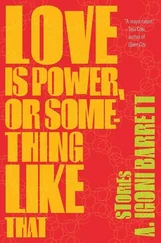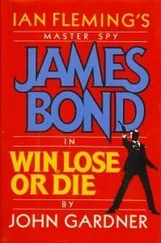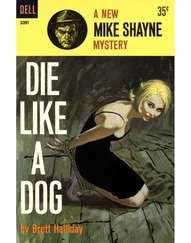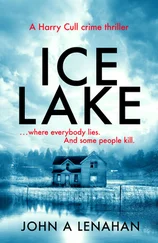1 ...7 8 9 11 12 13 ...23 I had hit seventeen when that happened and decided it was time to leave to work on my next newspaper, the Merthyr Express . It was also a weekly, but there the similarity ended. Penarth was prosperous and so prim and proper in those days that it may even be true that it was the inspiration for the old gag about its residents believing that ‘sex is what coal comes in’. Merthyr was a tough industrial town with a glorious past and not much of a future. It went from being the most prosperous town in Wales to the poorest. There was still coal mining in the South Wales valleys but towns like Merthyr were living on their histories. And what a history.
At the peak of the Industrial Revolution, the Welsh valleys were producing vast amounts of coal and iron. Merthyr had four great ironworks (one of them was said to be the most productive in the world) and – maybe Merthyr’s proudest boast – the first railway. The locomotive was designed by the Cornish engineer Richard Trevithick – Stephenson’s Rocket came later – and it managed to haul twenty-five tons of iron and a few passengers too.
So there was plenty of money being made, but not much of it found its way to the wretched souls slaving for a pittance in the ironworks and the pits as they created the wealth for the mighty ironmasters and pit owners to enjoy. The great Victorian essayist Thomas Carlyle wrote of ‘those poor creatures broiling, all in sweat and dirt, amid their furnaces, pits and rolling mills’.
The area where most of them lived became known as ‘Little Hell’ – and for good reason. If their jobs didn’t kill them there was a pretty good chance they and their families would be seen off by the cholera and typhoid which thrived in the open sewers. Flushing toilets were a stranger to Little Hell. A century after Carlyle, when I was reporting for the Merthyr Express , I had my own tiny taste of what the miners he had written about all those years ago had to endure. To this day I marvel that any of them managed to survive.
To drop in a cage to the bottom of a deep mine is not an experience for the faint-hearted. The speed of the descent through total darkness is terrifying, made worse by the grit that flies through the air, stinging your face. And when you get to the bottom all you can think about is how quickly you can get to the surface again. The idea that these men could spend a third of their lives down there was simply incomprehensible to me – as was the massive physical effort it had taken to create this and every other deep mine in the valleys.
I suppose I had imagined in my childish ignorance that once a mine had been sunk the miners immediately found the coal waiting for them to hack away and get it hauled to the surface. But first, of course, they had to dig out the thousands of tons of rock and waste to form the tunnels that gave them access to the black stuff. I looked up at the roof of the tunnel we were walking through to get to the coalface. All that stood between us and instant death were the ceiling props these men had put in place. If they got it wrong they died. And, of course, vast numbers did die: some from roof falls, many more from the deadly gases that could seep into the tunnels and reach the coalface.
Carbon monoxide was one of the big killers until, in 1913, someone had the brilliant idea of taking canaries down the mine. If the canary keeled over, the miners knew they had to get to the surface fast. Canaries were still being used until only a few years before I first went down a mine in 1961. An even bigger killer was methane.
An old miner told me what it was like to be working at the coalface and hear a loud bang. It happened to him once and, mercifully, turned out to be a relatively minor incident – a few injuries but no one killed. Even so, I struggled to imagine the sheer terror as he and the men with him raced back through the tunnel, not knowing whether the blast had brought down the roof ahead of them so they would be trapped. Perhaps rescuers would break through the fallen rock to save them. Perhaps they wouldn’t and they would die, as so many miners had, when their oxygen ran out or the attempt to rescue them brought more rocks crashing down and crushing them. Fatal accidents were commonplace.
Every miner in the Welsh valleys had his own story to tell of disasters that nearly happened – and those that did. The worst – only a few miles from Merthyr – killed more men and boys than any other mining disaster in the history of British mining. It was in 1913. Nearly 950 men were working at the Senghenydd colliery when a massive explosion ripped it apart and 439 were killed either by the blast itself or the poisonous gas that had created it.
Like most reporters working in the valleys in the days when almost every village had its colliery and every colliery had its share of tragedies, I was occasionally ordered by the editor to knock on the door of a grieving widow. I dreaded it. How could such an intrusion be justified at such a time? But never once was I sent away. Invariably I was invited in, given a cup of tea and shown photographs of the dead miner while the widow talked about what a wonderful man he had been. I seldom saw a tear shed – and I have always wondered why. Perhaps it was because women who married miners lived with fear from day one. They were prepared for the worst to happen. They knew, too, that even if their husband survived, his retirement would be a short one. The biggest killer of all was not the gas: it was the dust.
The first time I went for a drink in a miners’ club I noticed that many of the miners coming in after their shift would have a pint of water plonked in front of them by the barman. I asked him why. His answer was obvious when you think of it: ‘Waste of money buying a pint when your throat’s full of dust isn’t it? Makes sense to wash the dust away so you can taste the beer.’ If it was doing that to your throat, I thought, what the hell was it doing to your lungs? The answer: pneumoconiosis or silicosis or any of the other hideous illnesses caused by a life spent underground breathing in the deadly dust.
Many years after I had left the valleys behind me I reported on the 1984–5 miners’ strikes that brought the coalfields to a halt in a doomed attempt to save them from the cost-cutters and the hated Margaret Thatcher. I talked to many angry miners. But it was rare to meet a miner’s wife who mourned the death of the industry. In all my years in South Wales I never spoke to a mother who wanted her sons to follow their father down the pit.
I was to see for myself the ultimate, unthinkable, price of coal: a disaster in so many ways worse than all the others because its victims, crushed or suffocated to death, had not chosen to face the dangers of deep mining. But that was a few years after I had left the Merthyr Express to return to Cardiff and take another step up the journalistic greasy pole.
I had been offered a job as a reporter on a national daily no less – though not exactly the giddy heights of Fleet Street. It was the Western Mail , the national daily of Wales. I’d like to report that pretty soon my name was up in lights, or at least writ large on the front page. Sadly it never was. Not once. My great mistake had been to bear the same surname as the news editor of the paper, though he spelled his with an ‘e’ which I affected to think rather vulgar. Mine, I claimed, was pure Welsh, which was complete nonsense. The truth was that an incompetent registrar had misspelled my surname on my birth certificate so my parents and older siblings were ‘Humphreys’ and I was ‘Humphrys’. I pointed out to my news editor – a rather unpleasant bully with one of the most prominent beetled brows I had ever seen – that the different spelling would remove any confusion in the reader’s mind, but he was having none of it. He ordered me to adopt a different name for byline purposes. I chose Desmond and so I became ‘John Desmond’ for Mail readers. (I had been christened ‘Desmond John Humphrys’ but contracted very severe hooping cough when I was little and was such a miserable child my mother decreed I should henceforth be known as John. She was not, she announced, going to have people calling me ‘Dismal Desmond’.)
Читать дальше












